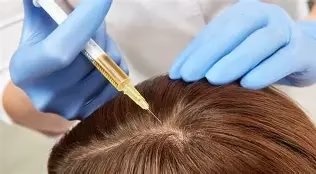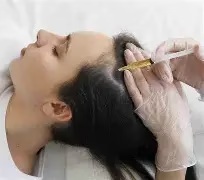
Related articles
Read more

Are you struggling with thinning hair or hair loss? You’re not alone—and there’s a scientifically-backed treatment that may help: PRP Hair Loss Treatment. This innovative, non-surgical procedure has become increasingly popular in recent years. In this guide, we’ll break down everything you need to know about Platelet-Rich Plasma (PRP) for hair loss, how it works, its benefits, and whether it’s right for you.
PRP (Platelet-Rich Plasma) hair treatment is a regenerative therapy used to stimulate hair growth using your own blood. The process involves drawing a small sample of your blood, processing it in a centrifuge to separate the platelets, and injecting the concentrated platelet-rich plasma into your scalp.
This treatment is backed by studies that show PRP can help increase hair count, improve hair thickness, and extend the growth phase of the hair cycle.

Blood Collection: A small amount of blood is drawn from your arm.
Centrifugation: The blood is spun to separate the plasma and platelets from red blood cells.
Injection: The PRP is injected into areas of the scalp where hair thinning is noticeable.
Platelets are rich in growth factors that promote healing, cell growth, and tissue regeneration. When injected into the scalp, these growth factors help rejuvenate dormant hair follicles.
PRP works best for individuals who:
Have early stages of hair thinning or mild to moderate hair loss.
Have androgenetic alopecia (male or female pattern baldness).
Are not completely bald.
Are looking for a natural, non-surgical solution.
Note: People with certain medical conditions like platelet disorders or chronic liver disease may not be eligible.
✔️ Non-surgical & minimally invasive
✔️ Uses your body’s natural healing abilities
✔️ Minimal downtime
✔️ Safe with low risk of allergic reactions
✔️ Can be combined with other treatments like minoxidil or microneedling
prp is generally safe, but as with any procedure, there can be side effects:
Mild pain or swelling at injection sites
Temporary scalp tenderness
Headache
Itching or redness
These effects usually resolve within a day or two.
Most patients start to see improvement in hair thickness and density after 2-3 sessions. Results vary based on age, genetics, and the severity of hair loss.
Want to see real results? Check out these before and after PRP hair treatment photos from clinical studies.
Typically, a treatment plan involves:
3–4 initial sessions, spaced 4–6 weeks apart
Maintenance treatments every 4–6 months
Your doctor will tailor the frequency based on your progress.
PRP Hair Loss Treatment is a powerful, non-surgical option that uses your body’s own platelets to stimulate hair growth. If you’re looking for a natural, minimally invasive solution to thinning hair, prp could be the answer.
💬 Thinking about PRP hair treatment? Speak with a certified dermatologist or hair restoration expert to see if it’s right for you.